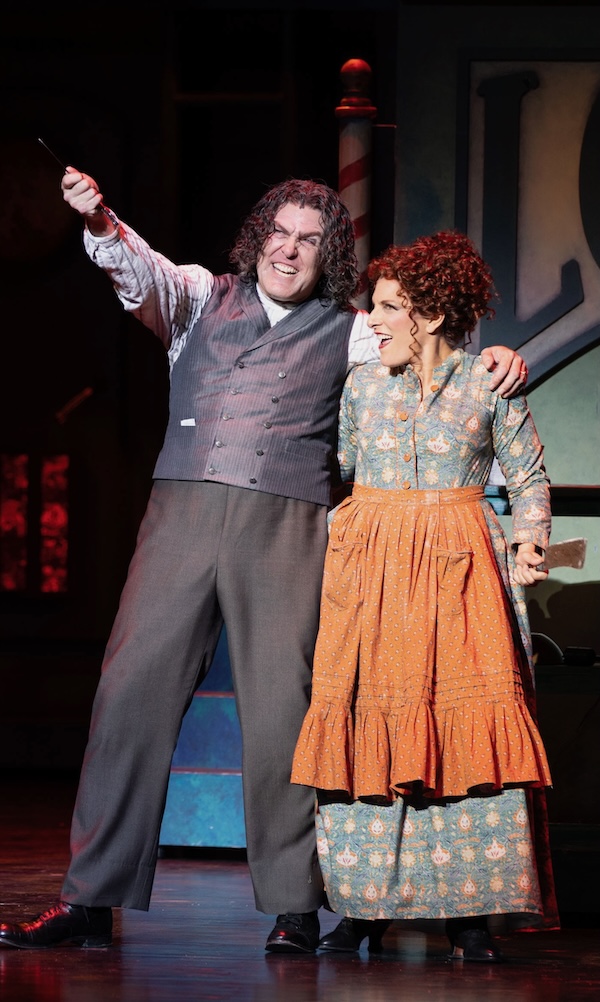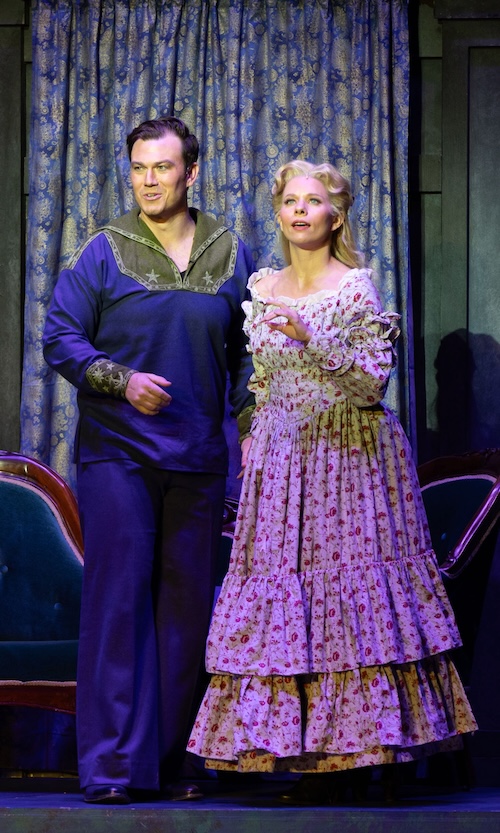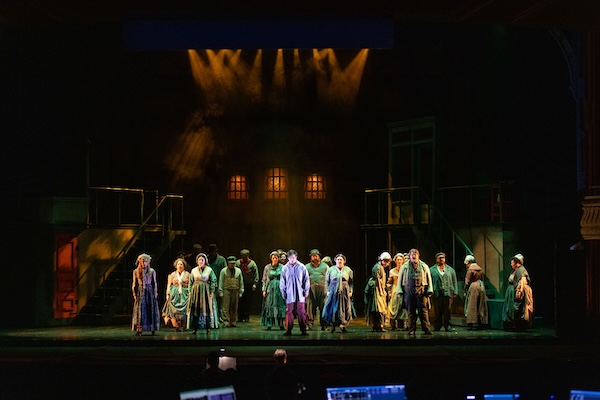Utah Opera opens season with a delightfully demented “Sweeney Todd”

Just in time for Halloween, Utah Opera has opened its season with a chilling, thrilling production of Sweeney Todd, Stephen Sondheim’s morbidly witty tale of cannibalism, depravity and revenge.
Sweeney Todd is the story of a barber who returns to Victorian London seeking revenge on the corrupt judge who wrongfully sent him to a penal colony for 15 years, raped his wife and abducted his infant daughter. He encounters his former landlady, Mrs. Lovett, whose pie business is failing, and soon they come up with a grisly solution to both of their dilemmas.
Michael Mayes’ portrayal of the demon barber is by turns terrifying and poignant. His powerful bass-baritone commands the stage—his “Epiphany” is seriously unsettling—but there’s always an edge of pathos in his vocal phrasing and body language. The presence of onstage machinery and the recurring metallic shriek that heralds his crimes are constant reminders that he, too, is a victim in Industrial Revolution-era London.
Audrey Babcock gives us a demented Mrs. Lovett who is laser focused in her devotion to Sweeney. (Some of her funniest moments stem from her desperate attempts to keep him from discovering the Beggar Woman’s identity.) The rapid-fire wordplay of “A Little Priest,” the duet that sets her and Sweeney on their fatal course, is delicious, but Babcock’s exultant rendition of “By the Sea” is equally memorable.
Amy Owens and John Riesen are charming as Sweeney’s daughter, Johanna, and her love interest, Anthony Hope. Owens trills wistfully through “Green Finch and Linnet Bird,” followed up by Riesen’s heart-melting “Johanna.” Their sprightly duet, “Kiss Me,” is an oasis of sweetness.
David Soar doesn’t oversell the evil of Judge Turpin; rather, he plays him as a self-important, entitled politician (an equally scary choice). The Judge is the only character given deeper, darker music to sing than Sweeney, and the collision of these two powerful voices in “Pretty Women” is surprisingly satisfying. This production cuts Turpin’s self-flagellation scene, and while that doesn’t feel like a big loss from a storytelling standpoint, another opportunity to hear Soar would have been welcome.
Bille Bruley is Turpin’s unctuous sidekick, Beadle Bamford, in a portrayal that likewise will feel familiar to those who follow politics—but watch out, because Bruley’s winning performance of the parlor songs in the second act might make you forget he’s a villain.
Christian Sanders plays Tobias as an eager puppy, both in his enthusiastic hawking of Pirelli’s Miracle Elixir and in his loyalty to his surrogate mother, Mrs. Lovett. His “Not While I’m Around” is the most tender moment in the show.
Robert Tweten, making his 17th appearance with the company (the most by far of any conductor), leads the Utah Symphony in a glorious performance of Sondheim’s magnificent score. Tweten’s perceptive reading from the pit—from the clarinet echoing Anthony’s infatuation with Johanna, to the piccolo accompanying Judge Turpin to the barber chair, to the turbulent strings and ironic brass throughout—is as central to the storytelling as any of the elements onstage.
Director Doug Scholz-Carlson leans hard into Sweeney’s perverse humor, particularly in the performance of Megan Marino as the Beggar Woman—a choice that presumably makes the plot twist involving that character all the more gutting for unsuspecting audience members. The showdown between Thomas Glenn’s zany (but expertly sung) Pirelli and the grimly focused Sweeney is another comedic delight. Scholz-Carlson’s dynamic direction also uses R. Keith Brumley’s stripped-down but constantly moving set to great effect.
It’s rare for Utah Opera to present works that originated on the musical-theater stage, and perhaps that’s why most of the spoken dialogue is difficult to make out. (It doesn’t help matters that so much of the speaking is underscored, and that the underscoring is quite a bit weightier than the usual continuo.) It might have been helpful for the supertitles to include the spoken lines in addition to the sung ones.
A couple moments of less-than-razor-sharp timing in the early choruses were the only other rough spot of opening night, but the Utah Opera Chorus had turned things around by the top of the second act. The Bedlam scene ran like clockwork, and the epilogue was positively spine-tingling.
Utah Opera’s Sweeney Todd runs through October 20. utahopera.org

